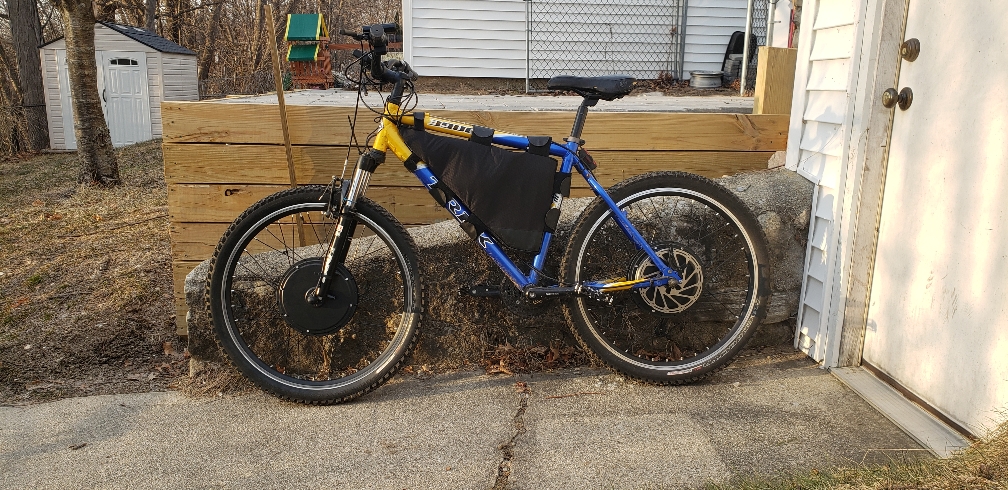Hello,
Ive been lurking on this forum ever since I converted my my bike to a hub drive. My motor was buzzing/vibrating as soon as I finished the conversion, but i never thought anything of it. Well, 30 miles later I have a fried controller.
Ive read many previous diagnostic threads about this issue. There are obviously many posts about checking "all 36 combinations" of phase and hall wires. I understand that 3 of the phase combinations will drive the motor forward and 3 will drive it in reverse.
Im not posting here for diagnostic help on this issue.
For this question, lets forget about the hall sensors. Can some one explain why one phase combination would work better another?
Why would one phase combo fry a controller, and another works flawlessly?
Attached, is a pic of my old Trek that I converted. Its 2wd with the front motor on a switch so I can turn it off to conserve energy. It was such a blast when it worked.

Sent from my SM-G965U1 using Tapatalk
Ive been lurking on this forum ever since I converted my my bike to a hub drive. My motor was buzzing/vibrating as soon as I finished the conversion, but i never thought anything of it. Well, 30 miles later I have a fried controller.
Ive read many previous diagnostic threads about this issue. There are obviously many posts about checking "all 36 combinations" of phase and hall wires. I understand that 3 of the phase combinations will drive the motor forward and 3 will drive it in reverse.
Im not posting here for diagnostic help on this issue.
For this question, lets forget about the hall sensors. Can some one explain why one phase combination would work better another?
Why would one phase combo fry a controller, and another works flawlessly?
Attached, is a pic of my old Trek that I converted. Its 2wd with the front motor on a switch so I can turn it off to conserve energy. It was such a blast when it worked.

Sent from my SM-G965U1 using Tapatalk

